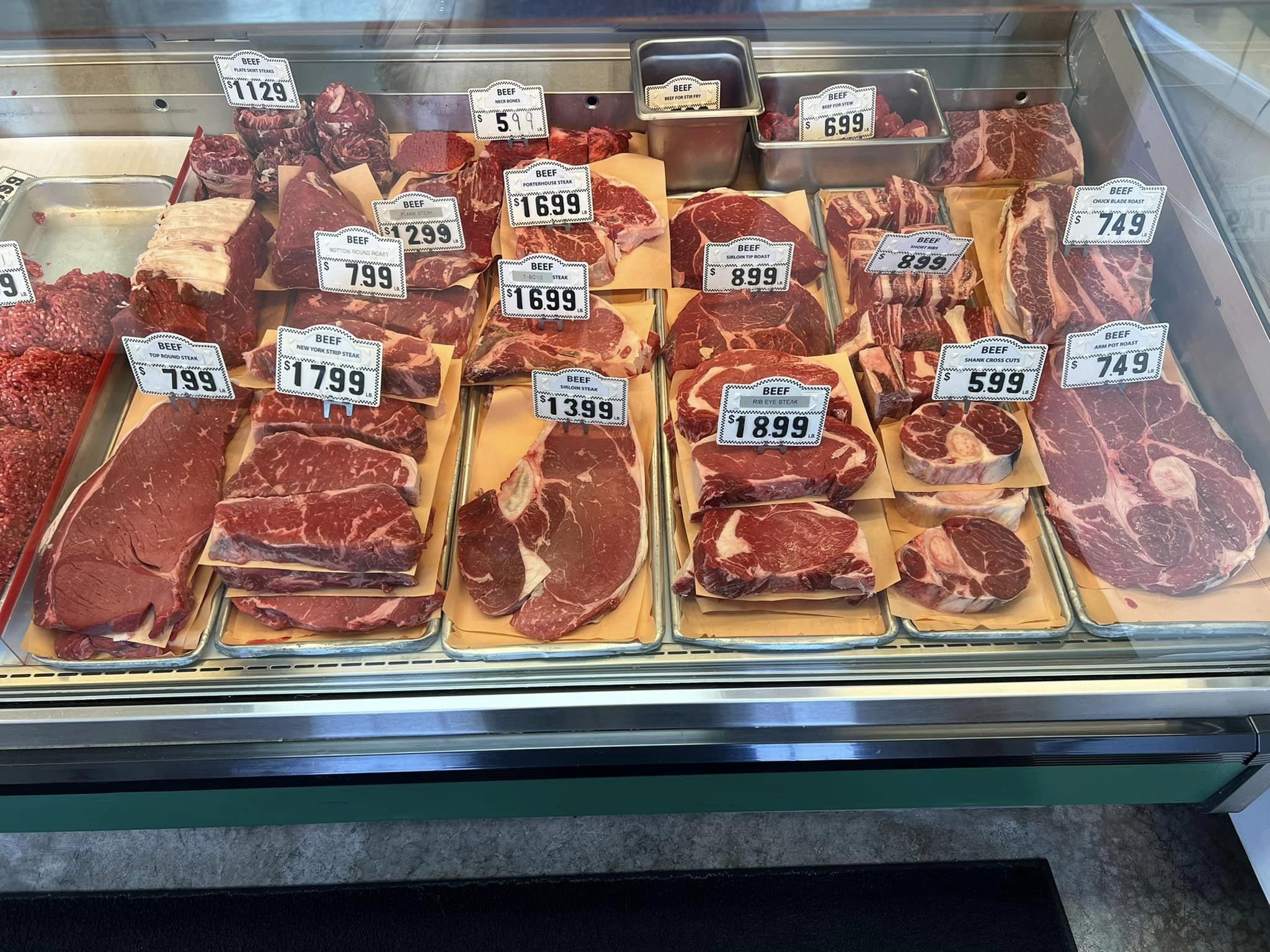Uncover the Art of the Butcher's Cut in a Modern Meat Market
In the ever-evolving landscape of modern-day meat markets, the butcher's cut has transcended its typical roots, combining olden workmanship with contemporary techniques. What really establishes the modern butcher apart is their capacity to forge a much deeper link between customers and the origins of their meat.
Development of Butchery Strategies

The mid-20th century saw butchery techniques further refined by clinical understandings into muscle biology and meat aging, boosting both inflammation and preference. Developments like vacuum cleaner product packaging and refrigeration expanded product shelf-life, allowing butchers to diversify offerings and boost quality assurance. This period also noted the increase of specialized tools, such as band saws and meat slicers, which raised precision and performance in meat processing.
Electronic systems now help in tracking pet provenance and optimizing cuts to satisfy certain customer choices. Furthermore, a revival in artisanal butchery has actually arised, blending typical skills with modern knowledge to provide to customers seeking honest and lasting meat options.

Understanding Meat Cuts

Comprehending the ins and outs of meat cuts is necessary for both butchers and customers seeking quality and worth. Each cut originates from a different part of the pet, presenting one-of-a-kind tastes, textures, and cooking approaches. Proficiency of these differences not just boosts culinary experiences but additionally maximizes the energy of each carcass. For butchers, exact cuts reflect ability and respect for the craft, ensuring marginal waste and ideal yield.
The primary classifications of meat cuts include primitive, sub-primal, and retail cuts. Primal cuts, such as the loin, rib, and chuck, are the huge sections originally separated from the carcass. Butchers after that break these down better into sub-primal cuts, prior to finally generating retail cuts available to consumers, like ribeye or tenderloin. Each phase needs mindful attention to physiological structure and muscle mass make-up.
Comprehending muscular tissue composition is vital; muscles utilized a lot more frequently by the animal have a tendency to be harder and are best suited for sluggish food preparation approaches, while less-used muscles, like those discovered in the loin, are a lot more tender and perfect for grilling or roasting. Experience with these differences encourages consumers to make informed options, improving their cooking undertakings.
Selecting Quality Meat
Picking the ideal meat includes more than simply selecting a visually appealing item from the screen. The art of selecting top quality meat needs a discerning eye and expertise of particular attributes that indicate freshness and excellence.
Second of all, consider the marbling, which describes the white flecks of fat within the muscular tissue. Appropriate marbling is a key indication of tenderness and taste, as it melts throughout cooking, boosting the meat's juiciness. Remember, greater marbling typically correlates with superior quality cuts, such as USDA Prime.
Structure is another important element; meat needs to feel her response solid to the touch, not slimy or excessively soft. In addition, bear in mind the aroma. Fresh meat ought to reference have a tidy, neutral smell, without any sour or off-putting smells.
Matching Cuts With Food Preparation Approaches
Successfully matching cuts of meat with the proper food preparation approaches is essential for achieving optimal flavor and texture. These techniques improve the meat's natural tastes and make certain a juicy coating.
Conversely, tougher cuts like brisket and chuck roast are rich in collagen, which damages down into jelly when prepared gradually. These cuts are excellent for braising or slow-moving roasting, permitting the meat to soften with time and create deep, complicated tastes. Similarly, cuts such as brief ribs and pork shoulder prosper with slow-cooking approaches, where extended cooking times transform their durable structures into succulent dishes.
Lamb shanks and oxtail, which call for extended cooking to tenderize, are excellent prospects for stewing or slow simmering. These approaches coax out abundant, hearty flavors while keeping wetness. By comprehending the distinct qualities of each cut, chefs and home chefs alike can raise their culinary creations, ensuring each recipe is both satisfying and unforgettable.
The Butcher's Role Today
Navigating the evolving landscape of the modern-day meat market, the butcher's function today expands beyond simple preparation of cuts. Contemporary butchers are cooking artisans, educators, and advocates for lasting methods.
In enhancement to crafting exact cuts, butchers now engage directly with customers, using cooking advice and customizing selections to match individual demands and preferences. Their competence in meat aging, marbling, and taste profiles encourages consumers to make enlightened decisions, boosting their cooking experiences. This individualized service exemplifies the butcher's advancing function as a relied on consultant in the kitchen.
Additionally, butchers are pivotal in reducing waste, making use of whole animals to produce varied products such as sausages and stocks - bagley farms meat market edwardsville il. click to find out more This thorough method not only appreciates the pet but also aligns with contemporary sustainability goals. In this means, the modern-day butcher personifies both tradition and innovation, adapting to an ever-changing market while protecting the artistry and integrity of their craft

Conclusion
The modern butcher's craft delicately weaves standard methods with modern innovations, stressing lasting methods and ethical sourcing. Proficiency in comprehending diverse meat cuts and top quality signs encourages butchers to supply educated referrals, lining up specific cuts with ideal cooking approaches. This experience not just boosts culinary experiences however additionally reinforces the connection in between consumers and the beginnings of their food. By honoring historic methods while accepting modern needs, the butcher's role stays vital in today's advanced meat market.